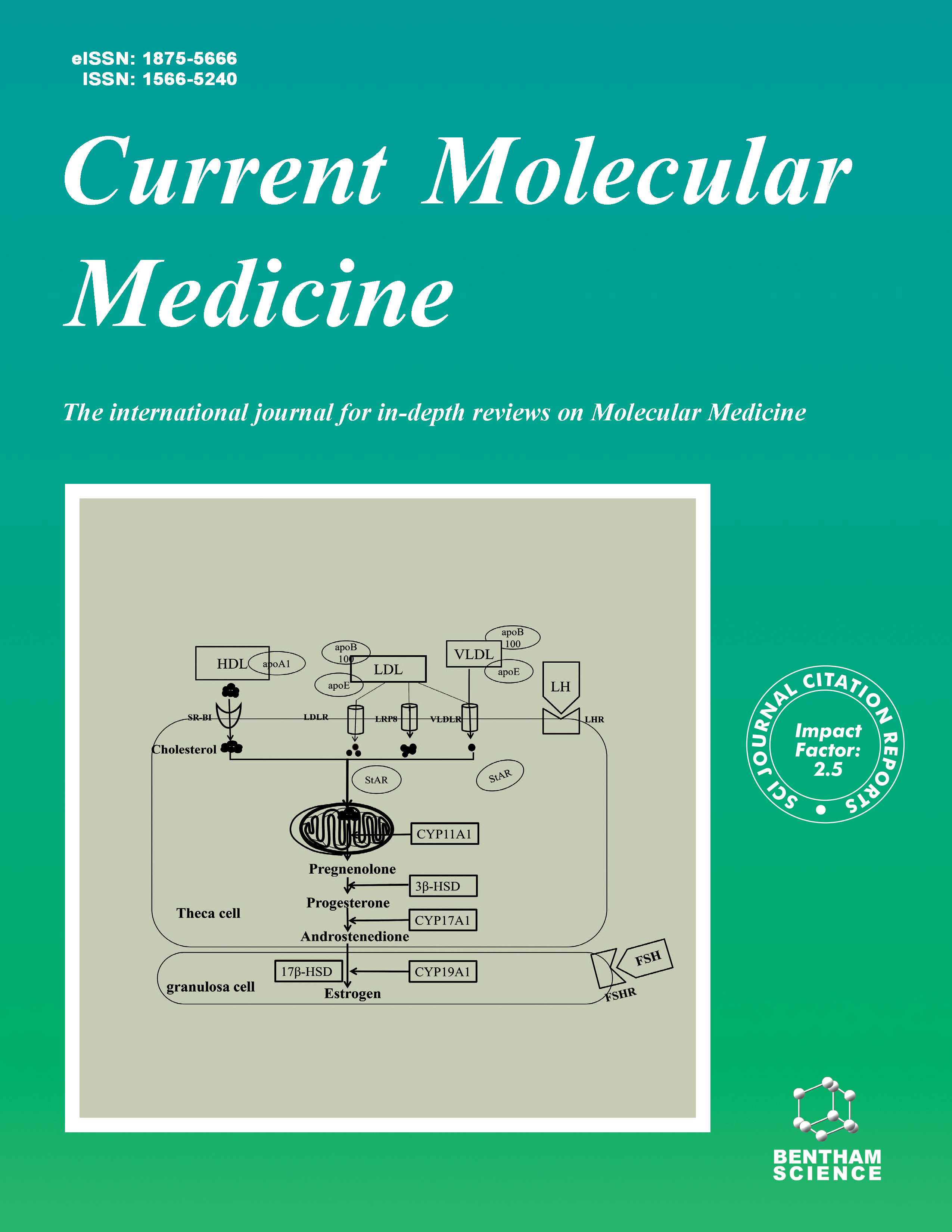- Home
- A-Z Publications
- Current Molecular Medicine
- Previous Issues
- Volume 23, Issue 3, 2023
Current Molecular Medicine - Volume 23, Issue 3, 2023
Volume 23, Issue 3, 2023
-
-
Current Progress and Perspectives of CDC20 in Female Reproductive Cancers
More LessThe cancers of the cervix, endometrium, ovary, and breast are great threats to women’s health. Cancer is characterized by the uncontrolled proliferation of cells and deregulated cell cycle progression is one of the main causes of malignancy. Agents targeting cell cycle regulators may have potential anti-tumor effects. CDC20 (cell division cycle 20 homologue) is a co-activator of the anaphase-promoting complex/cyclos Read More
-
-
-
Interaction Among Noncoding RNAs, DNA Damage Reactions, and Genomic Instability in the Hypoxic Tumor: Is it Therapeutically Exploitable Practice?
More LessAuthors: Suman K. Ray and Sukhes MukherjeeHypoxia is a classical function of the tumor's microenvironment with a substantial effect on the development and therapeutic response of cancer. When put in hypoxic environments, cells undergo several biological reactions, including activation of signaling pathways that control proliferation, angiogenesis, and death. These pathways have been adapted by cancer cells to allow tumors to survive and even develop in hypoxic co Read More
-
-
-
Natural Compounds as Integrative Therapy for Liver Protection against Inflammatory and Carcinogenic Mechanisms: From Induction to Molecular Biology Advancement
More LessThe liver is exposed to several harmful substances that bear the potential to cause excessive liver damage ranging from hepatitis and non-alcoholic fatty liver disease to extreme cases of liver cirrhosis and hepatocellular carcinoma. Liver ailments have been effectively treated from very old times with Chinese medicinal herbal formulations and later also applied by controlled trials in Japan. However, these traditional practices Read More
-
-
-
Transcription Factors – the Essence of Heart Regeneration: A Potential Novel Therapeutic Strategy
More LessMyocardial cell injury and following sequelae are the primary reasons for death globally. Unfortunately, myocardiocytes in adults have limited regeneration capacity. Therefore, the generation of neo myocardiocytes from non-myocardial cells is a surrogate strategy. Transcription factors (TFs) can be recruited to achieve this tremendous goal. Transcriptomic analyses have suggested that GATA, Mef2c, and Tbx5 (GMT cockt Read More
-
-
-
Transcriptomic Signatures in Colorectal Cancer Progression
More LessAuthors: Pavel Ershov, Stanislav Poyarkov, Yulia Konstantinova, Egor Veselovsky and Anna MakarovaAims: Due to a large number of identified hub-genes encoding key molecular regulators, which are involved in signal transduction and metabolic pathways in cancers, it is relevant to systemize and update these findings. Background: Colorectal cancer (CRC) is the third leading cause of cancer death in the world, with high metastatic potential. Elucidating the pathogenic mechanisms and selection of novel biomarkers in CRC is of Read More
-
-
-
Anti-diabetic Effects of Macronutrients via Modulation of Angiogenesis: A Comprehensive Review on Carbohydrates and Proteins
More LessAuthors: Mina Khosravifar, Soraya Sajadimajd and Gholamreza BahramiBackground: Diabetes is a major global health concern, manifesting the symptoms of chronic hyperglycemia. Either insufficient or excessive angiogenesis is generally involved in the pathogenesis of diabetes and its complications. Objective: Given that macronutrients are important dietary players in global health issues, we aimed to review the role of macronutrients, including carbohydrates and proteins, to manage diabete Read More
-
-
-
Adipose Tissue-Mesenchymal Stem Cells Caused to Change the Methylation Status of hTERT Gene Promoter CpG Islands of Molt-4 Leukemia Cells as Cell-based Therapy
More LessBackground: DNA methylation was considered as prognostic information in some hematological malignancies. Previous studies have reported the in vitro and in vivo biology role of mesenchymal stem cells (MSCs) on leukemic cells. The aim of this study was to investigate the effect of MSCs on the promoter methylation status of hTERT as a catalytic subunit of telomerase enzyme. Methods: In the experimental study, the Molt-4 leuk Read More
-
-
-
Silencing of Long Non-coding RNA H19 Alleviates Lipopolysaccharide (LPS)-induced Apoptosis and Inflammation Injury by Regulating miR-140-5p/TLR4 Axis in Cell Models of Pneumonia
More LessBy Hong YangObjective: Mounting studies have clarified the link between long non-coding RNAs (lncRNAs) and pneumonia. This research aims to probe the function and regulatory mechanism of lncRNA H19 in lipopolysaccharide (LPS)-induced cell models of pneumonia. Methods: WI-38 cells were exposed to LPS for 12 h to mimic cell models of pneumonia. The relative expression of H19, miR-140-5p, and toll-like receptor 4 (TLR4) Read More
-
Volumes & issues
-
Volume 25 (2025)
-
Volume 24 (2024)
-
Volume 23 (2023)
-
Volume 22 (2022)
-
Volume 21 (2021)
-
Volume 20 (2020)
-
Volume 19 (2019)
-
Volume 18 (2018)
-
Volume 17 (2017)
-
Volume 16 (2016)
-
Volume 15 (2015)
-
Volume 14 (2014)
-
Volume 13 (2013)
-
Volume 12 (2012)
-
Volume 11 (2011)
-
Volume 10 (2010)
-
Volume 9 (2009)
-
Volume 8 (2008)
-
Volume 7 (2007)
-
Volume 6 (2006)
-
Volume 5 (2005)
-
Volume 4 (2004)
-
Volume 3 (2003)
-
Volume 2 (2002)
-
Volume 1 (2001)
Most Read This Month
Article
content/journals/cmm
Journal
10
5
false
en


